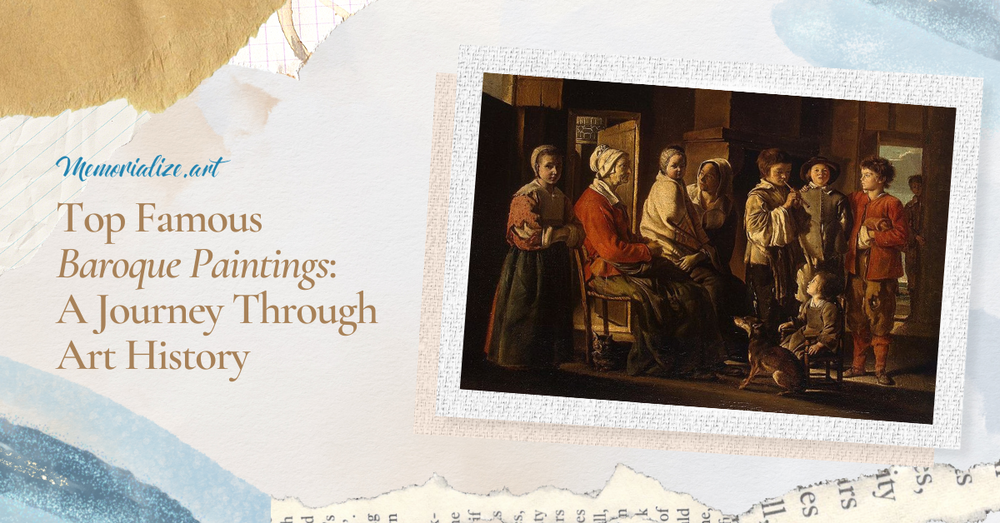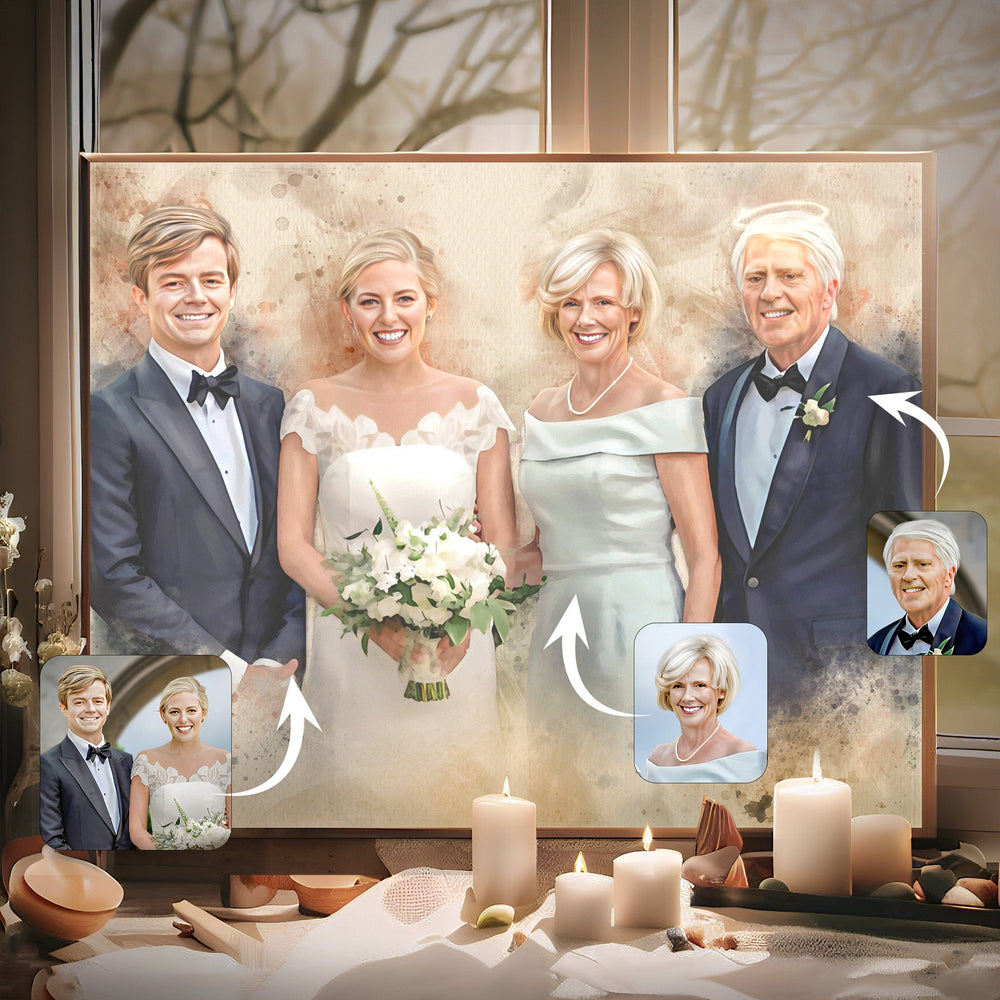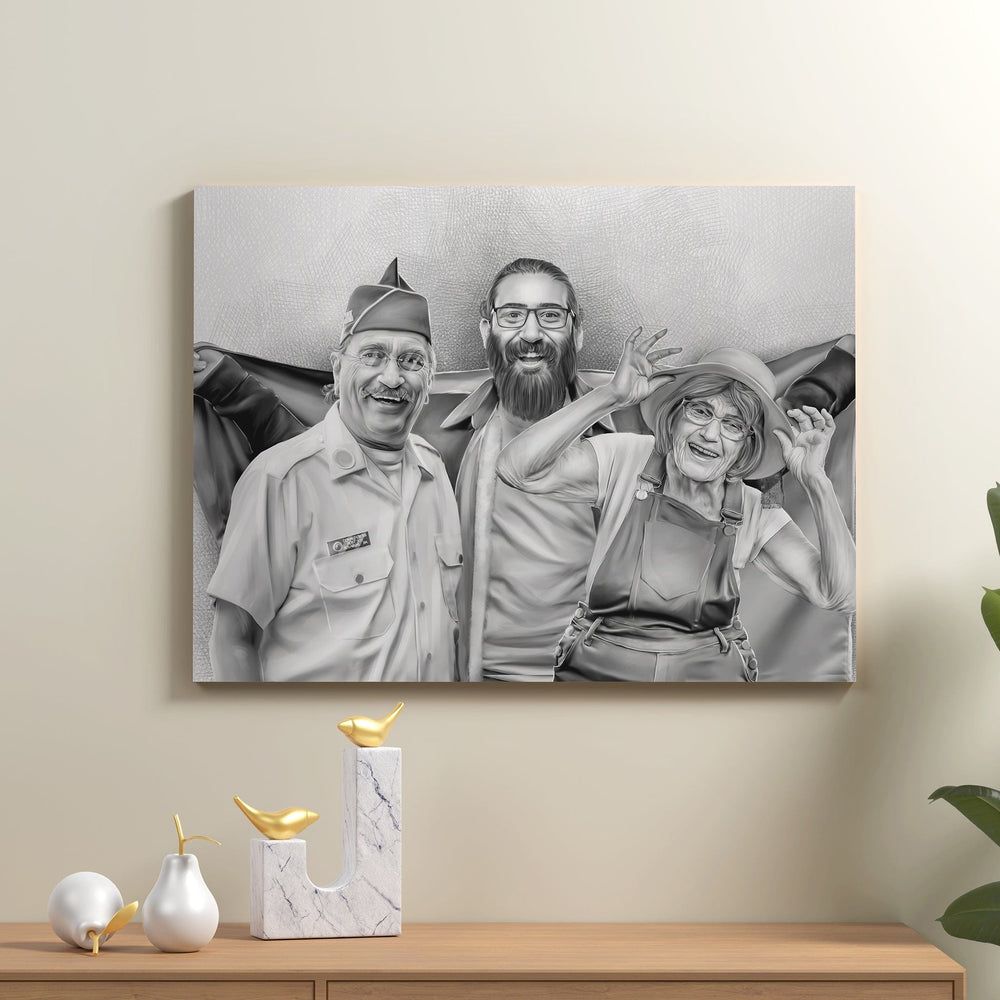Top 5 Famous Baroque Paintings: A Journey Through Art History

Do you love the drama and detail of Baroque art? Born in the late 1500s, this style has made a big splash in the art world. Known for its bold contrasts, sense of movement, and rich details, Baroque art gives us a peek into a time of big changes in culture and politics.

In this article, we'll share our top five picks of famous Baroque paintings. These stunning pieces were created by some of the best artists of the time. They show off what makes Baroque art so special – it's full of action, emotion, and detail that pulls you in.
Get ready for an exciting trip back in time. We'll dig into these famous works, learn their stories, and get to know the talented artists who made them. Whether you're an art lover or just curious, this journey through Baroque art history is sure to be fun and interesting.
Understanding the Baroque Art Movement
The Baroque Art Movement is like a thrilling book that takes you back to the late 16th century, a time of big changes in culture and politics. This art style started around the time of the Catholic Reformation. The main goal? To create art that touches the heart and stirs up strong feelings. It's all about drama and expression.
The name "Baroque" has an interesting origin. It comes from the Portuguese word "barroco," which means "oddly shaped pearl." Quite a fitting name, isn't it? After all, Baroque art is all about grandeur, luxury, and bold contrasts that catch your eye.
In Baroque art, you often see intense light and deep shadows. Artists of this era loved to make their work dynamic and full of tension. They used detailed scenes and bright colors to tell stories. These stories could be about anything - religion, myths, or historical events.
In-depth Look at Baroque Art
Ready to dive deeper into the world of Baroque art? Let's go. One of the first things you'll notice is the grand scale and drama. Artists of this period were experts at using light and shadow in a way that created depth and volume. The technique is known as chiaroscuro, and it's one of the key features of Baroque art.
Another thing you'll notice is the sense of movement and energy. Baroque artists didn't want their paintings to be still and lifeless. They used swirling lines and curves to guide your eyes through the painting. The scenes they painted were always full of emotion, whether it was a scene from the Bible or a moment from daily life.
But Baroque art isn't just a feast for the eyes. It also tells us a lot about the time it was created. Through their work, Baroque artists shared their thoughts on religion, power, and society. This makes their art not just beautiful but also a fascinating snapshot of history for us to study and enjoy today.
Baroque Art Pieces
Baroque art is a visual journey into a world of grandeur, luxury, and intense emotions. Each piece from this era tells a story, often filled with drama and movement. Let's immerse ourselves in this world by exploring three notable pieces of Baroque art.
"The Conversion of Saint Paul" by Caravaggio
Caravaggio, an Italian artist, was a master at using light and shadow to create depth and emotion in his paintings. One of his most striking works is "The Conversion of Saint Paul." In this painting, Caravaggio captures a powerful moment from the Bible.
Saul of Tarsus, who once persecuted Christians, is struck blind by a divine light on his way to Damascus. This event led him to convert to Christianity and become the Apostle Paul. The way Caravaggio uses light and shadow in this painting makes the moment feel even more dramatic and intense.
"The Night Watch" by Rembrandt
Next up is "The Night Watch" by the Dutch artist Rembrandt. It is no ordinary portrait. Instead of painting a group of city guards standing still, Rembrandt shows them in action.
You can almost hear the clank of their armour and the buzz of their conversation. This sense of movement and energy makes "The Night Watch" captivating.
"Ecstasy of Saint Teresa" by Bernini
Our last stop is "Ecstasy of Saint Teresa," a sculpture by the Italian artist Bernini. It depicts Saint Teresa of Avila in a state of divine joy. Bernini has managed to make the marble seem almost alive with emotion.
You can see the intense joy on Saint Teresa's face, making this sculpture a beautiful testament to Bernini's skill and creativity.
Famous Baroque Paintings from the 1600s
The 1600s were a golden age for Baroque art, with artists pushing the boundaries of what was possible. Let's take a closer look at three famous paintings from this period.
Las Meninas" by Diego Velázquez
Our first stop is Spain, where we find "Las Meninas" by Diego Velázquez. The painting is a puzzle that plays with your perception. It shows a scene from the Spanish court, but there's a twist - the artist himself is in the painting! Velázquez's clever use of perspective makes "Las Meninas" a fascinating piece to study and enjoy.
"The Triumph of Bacchus" by Diego Velázquez
Next, we have another masterpiece by Velázquez, "The Triumph of Bacchus." In this painting, Bacchus, the god of wine, is celebrating with common people.
Velázquez has painted each person and object in such detail that you can almost feel the different textures - the smooth skin of Bacchus, the rough clothes of the peasants, and the cold metal of the goblets.
"Girl with a Pearl Earring" by Johannes Vermeer
Finally, we have "Girl with a Pearl Earring" by the Dutch artist Johannes Vermeer. Often called the 'Dutch Mona Lisa,' the painting is one of the most famous pieces of Baroque art. Vermeer is known for his skill in painting light and texture, and this painting is a perfect example.
The girl's skin seems to glow, and the pearl earring looks so real that you could reach out and touch it. But it's not just the technical skill that makes this painting special. It's also the girl's expression - a mix of innocence and mystery that has captivated viewers for centuries.
Religious Influence on Baroque Art
Religion played a significant role in shaping Baroque art. The period in which this art style flourished coincided with the Catholic Reformation, a time when the Catholic Church was seeking to reassert its power and influence in the face of the Protestant Reformation. To do this, the Church turned to art.
The Church commissioned artists to create grand, emotive pieces that would inspire awe and devotion among the faithful. These works often depicted religious scenes from the Bible or the lives of the saints. The aim was to make these stories feel alive and real, to stir up strong emotions in those who viewed them.
Baroque artists responded to this call by creating dramatic, dynamic works. They used techniques like chiaroscuro (the contrast between light and dark) and tenebrism (deep shadows) to heighten the drama and emotion in their paintings. They also used perspective to draw the viewer into the scene, making them feel part of the story.
In this way, religion didn't just influence the content of Baroque art - it also shaped its form. The Church's desire for art that touched the heart led to the creation of an art style that was all about emotion and expression.
The Four Main Baroque Artists: Who Were They?
The Baroque era was a time of great artistic creativity and innovation. Let's take a closer look at four of the main artists from this period.
Caravaggio
Caravaggio, an Italian artist, is known for his dramatic use of light and shadow. His paintings, often featuring biblical scenes or still lifes, are characterized by their emotional intensity and stark realism.
Rembrandt
Rembrandt, a Dutch artist, is considered one of the greatest painters in European history. Known for his self-portraits and biblical scenes, Rembrandt's work is characterized by his innovative use of light and shadow and his ability to capture the human soul.
Peter Paul Rubens
Peter Paul Rubens, a Flemish artist, is known for his energetic and sensuous paintings. His works, which include portraits, landscapes, and historical pieces, are characterized by their vibrant color, dynamic compositions, and robust, lifelike figures.
Diego Velázquez
Diego Velázquez, a Spanish artist, is widely regarded as one of the most important painters of the Spanish Golden Age. Known for his realistic and complex portraits of the Spanish royal family, Velázquez's work is celebrated for its depth and attention to detail.
His masterpiece, "Las Meninas," is considered one of the most iconic and analyzed paintings in Western art history. Velázquez's innovative use of perspective and his skill in capturing the human essence make him a pivotal figure in the Baroque art movement.
The Continued Relevance of Baroque Art
Even centuries after its heyday, Baroque art continues to captivate us. Its influence can be seen in many aspects of modern culture, from film and theatre to fashion and interior design.
One reason for this enduring relevance is the emotional depth of Baroque art. The dramatic light and shadow, the sense of movement and energy, the rich detail - all these elements work together to create art that touches the heart. In our fast-paced digital age, this ability to stir up deep emotions is perhaps more valuable than ever.
Another reason is the technical skill of Baroque artists. Their mastery of techniques like chiaroscuro and tenebrism and their ability to create a sense of depth and volume - are things that artists and designers still study and admire today.
Finally, Baroque art is relevant because of what it tells us about history. Through its grand scenes and detailed portraits, Baroque art gives us a glimpse into the past. It shows us the power and splendour of the Church, the opulence of the aristocracy, and the daily life of the common people. In this way, Baroque art is not just beautiful - it's also a fascinating window into a bygone era.
Baroque Art Inspiration for Oil Painting
Baroque art, with its dramatic use of light and shadow, its rich detail, and its emotional depth, can be a great source of inspiration for oil painting. The techniques used by Baroque artists, such as chiaroscuro and tenebrism, can add depth and drama to your work. Studying Baroque paintings can also help you improve your skills in portraying emotion and movement.
How to Store an Oil Painting?

Proper storage is crucial to preserving the beauty of an oil painting. Here are some tips on How to Store an Oil Painting:
Avoid Extreme Conditions
Keep your painting in a stable environment, avoiding extremes of temperature and humidity. Fluctuations can cause the paint to crack or the canvas to warp.
Use Padding
Wrap the painting in acid-free tissue paper or a clean cotton sheet to protect the surface.
Avoid Stacking
If possible, avoid stacking paintings. If you must stack them, ensure each painting is separated with a protective layer.
Keep Upright
Store paintings upright, not leaning against each other, to prevent damage to the frames or canvases.
What are Some Advantages of Oil Painting

What are some advantages of oil painting, you ask? Oil painting offers several advantages for artists:
Blendability
Oil paints dry slowly, allowing more time to blend colors on the canvas.
Richness of Color
Oil paints have a depth and richness of color that is hard to match with other mediums.
Versatility
You can apply oil paints in thin glazes or thick impasto strokes, giving you a wide range of textures and effects.
Longevity
When properly cared for, oil paintings can last for centuries.
Incorporating a Lost Loved One in Family Painting from Memorialize Art

Memorialize Art offers a unique way to remember and honor a lost loved one. Incorporating a lost loved one in family painting creates a beautiful piece of art that keeps all the memories alive. It can be done through careful consultation with you, ensuring the painting reflects your loved one's personality and likeness.
Custom Family Portrait Painting from Memorialize Art

Memorialize Art offers custom family portrait painting services, allowing you to capture precious family moments in a timeless piece of art. We work closely with you to create a painting that truly reflects your family.
Whether it's a special occasion or just an everyday moment, Memorialize Art can help you preserve it in a beautiful, high-quality oil painting.
Capture Your Precious Memories with Memorialize Art
Don't let your cherished moments fade away. At Memorialize Art, we bring your memories to life through our custom family portrait painting services. Whether it's a special occasion, an everyday moment, or a loving tribute to a lost loved one, we're here to help you preserve it in a beautiful, high-quality oil painting.
Start your journey with us today and turn your memories into lasting pieces of art. Contact us now to learn more about our services and how we can help you memorialize your special moments.










